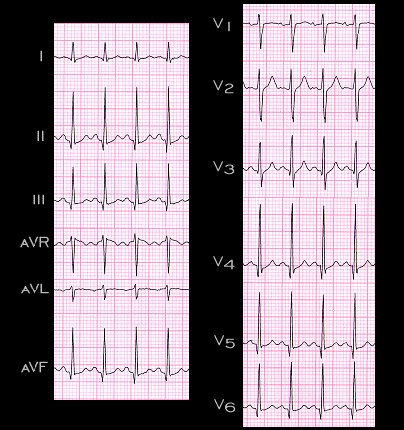
An example of sinus tachycardia is shown here. The tracing is from a 41 year old female with hyperthyroidism but no other evidence of heart disease.. The rate is 160/min, the PR interval is 0.12 sec (120 ms), and the QT interval is 0.25 sec (250 ms). This short QT interval reflects the shortening of the action potential duration that occurs as the rate increases. As discussed in chapter 2, the QT interval is corrected for changes in heart rate by Bazett’s formula (QTc = QT/sq root[PUT IN SQ ROOT SIGN] RR. In this example, the corrected QT interval (QTc) is 0.39 sec (390 ms) which is normal.. The P waves are normal with a frontal plane axis of + 70 degrees and the narrow Q waves in leads II, III and aVF are also within normal limits.
